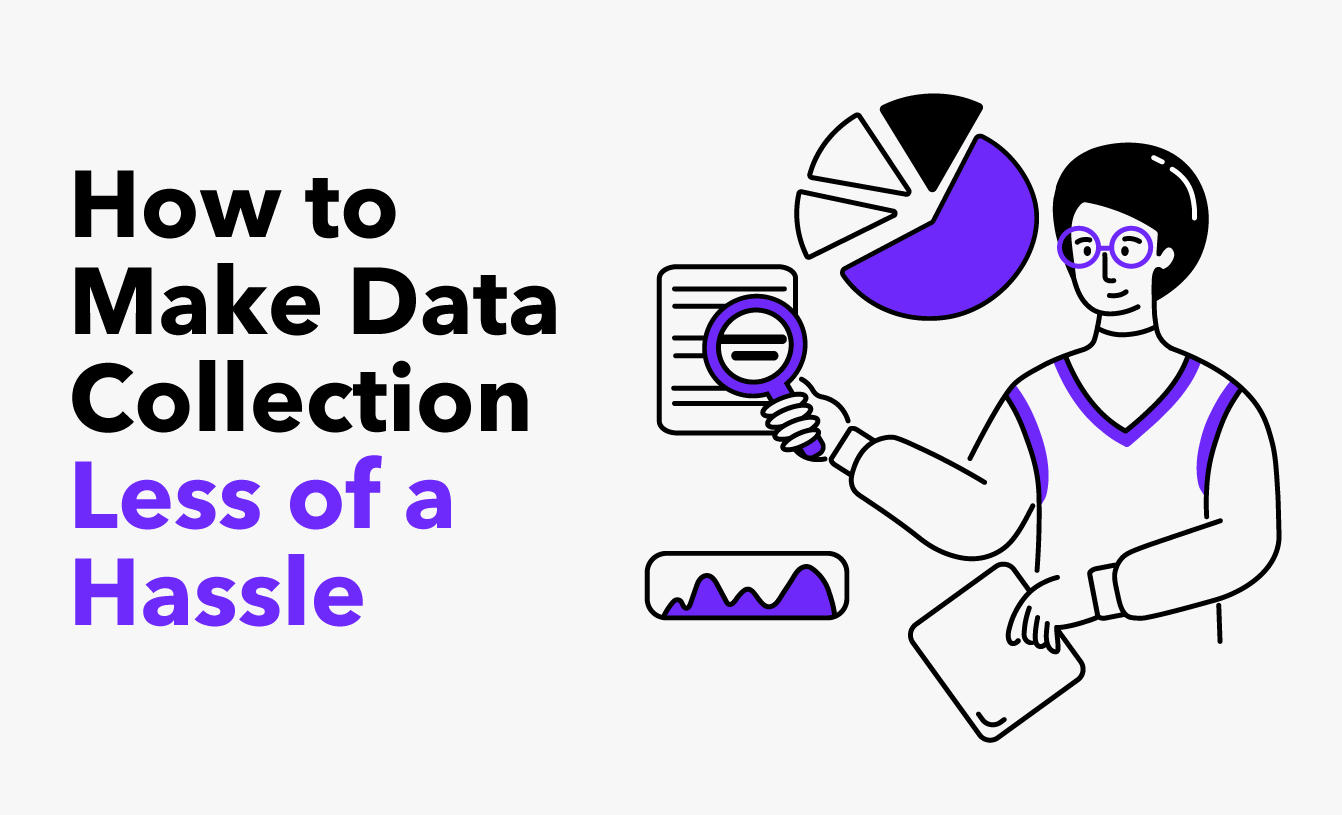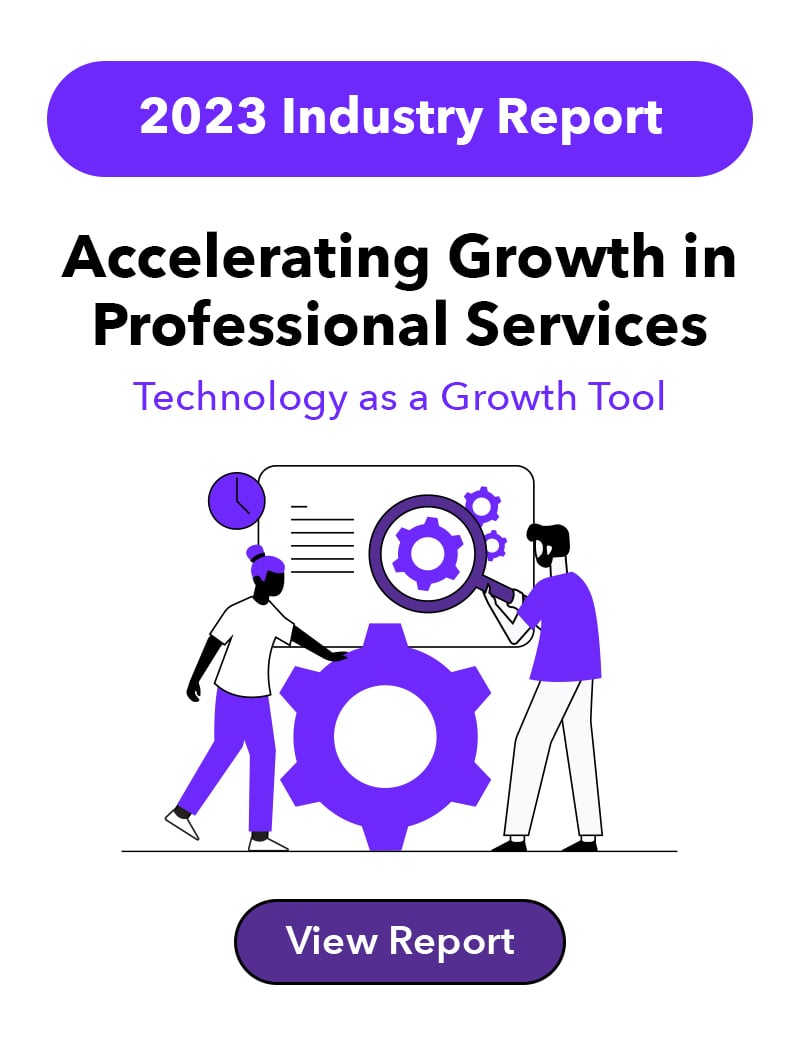Every day professional services firms gather data via emails, website forms, surveys, stored client information and more. This data collection process provides professional services firms with invaluable information about how to improve services, anticipate and understand client needs and develop strategies for business growth.
However, not all collected data ends up being used. According to PWC, unused data, called dark data, makes up the majority of information companies collect. It’s usually unstructured data - such as videos, emails and images - that doesn’t fit neatly into a spreadsheet, so it never gets analyzed and used.
Professional services firms probably don’t intend to leave valuable data in the dark. It’s more likely they simply don’t have the right data collection methods or a strong data culture, which solidifies - company-wide - just how important data is.
Without a strong data culture, you could end up using disconnected data collection tools with unreliable input processes and even create harmful silos. That means different sets of teams could be logging (or not logging) valuable data in multiple ways, making it low-quality, inaccessible or unusable.
Here's how to address data collection issues and create a better data culture that links to your firm’s data strategy.
Create a Culture of Data Sharing
Your team won’t be motivated to effectively collect data if they don’t understand just how valuable it is.
Creating a culture of data sharing begins by making the benefits clear and irresistible to everyone. Let’s illustrate this in general terms: A professional services firm that’s data-driven will have better insights about how to anticipate client patterns, make better business decisions and deliver smarter services.
For example:
Better data collection will improve how you make your next pitch.
➡ Great pitches help win more clients.
➡ More clients mean improved company growth.
➡ Company growth means more financial opportunities.
In addition to making these general benefits clear, make sure that you also communicate specific ways that you are using and plan to use data in your firm. Highlight how pain points or needs that they have can be minimized or even eliminated with strong data collection processes.
This can be done on an obgoing basis, as well, not just at the inception of this strategy. As you unlock new capabilities with your data, share these wins with your team to further evangelize them on the value of data.
Providing a clear understanding as to why you’re collecting data will help motivate team members to submit the data they get from new deals, bios and more. And if you give your team the opportunity to be involved in creating a data collection system, the buy-in will be even stronger.
Create as Few Collection Channels as Possible
The amount of data collected by a professional services firm can be so vast that it can be overwhelming deciding what to do with it all.
Should the data be emailed, added to a spreadsheet or entered in multiple locations? Using several channels to collect data can frustrate your employees. According to PWC, 61% of employees say they spend more time getting technology to work than they’d like, and adding several collection channels will only exacerbate this problem.
Making data collection simple, from one accessible source, encourages your employees to collect, log and access it correctly.
Disparate systems create data silos, decrease productivity and cause slow response times. Choosing one effective channel creates transparency and eliminates silos since everyone has access to the same data.
For example, a data enablement platform creates a centralized database that eliminates manual searches across multiple channels while ensuring the integrity of the data.
When looking at ways to collect data, there are several options but one of the easiest is to use a form. Google Forms and Typeform are tools that allow professional services firms to quickly collect data from clients and staff. The forms can include open and multiple-choice questions as well as scales and grids.
Once you create a standard form for everyone to use, make it easy to access. Send it to all your employees or send a cloud link they can bookmark on their browsers.
Establish Clear Data Collection Protocols
While quantity matters, quality trumps it when it comes to data. Better quality data produces better insights into your clients and business. Without it, you could be making decisions based on the wrong information.
Keep data accurate by developing standardized protocols for collecting, recording and storing data.
This starts with your data collection system. It’s best to select an option that puts safeguards in place to keep data secure. For example, some firms choose to collect, record and store data in Excel spreadsheets but these can be altered by anyone with access to the sheet leading to errors and version control struggles. It’s typically best to have approval workflows in place to ensure that every piece of data is accurate before it even hits your library.
Defining which team members will be responsible for each part of data collection also keeps it secure. Assign roles for team members that determine who does what to collect data. Understanding who is responsible for certain roles can help quickly pinpoint where an error occurred, saving you the hassle of combing through tons of data to find the mistake.
While your entire team should have access to data, it should be controlled. Creating dedicated workspaces ensures everyone has access to the exact data they need and no more. Admins have access to all the data and can assign users and teams to one or more workspaces.
Integrate Your Data Collection Tool Into Your Current Workflow
Even if you have buy-in and excitement from every single member on your team, that enthusiasm will not translate into longterm use if the data collection processes you create are working against the rhythm of your current workflows.
The most effective data collection tool is one that integrates with your current systems. It should complement your MarTech stack which fits together as a cohesive ecosystem.
When something clicks right into your ecosystem like a lego piece, it takes less effort for your team to adopt it. Using multiple systems that don’t work together can be a drain on your employees. According to the Society of Human Resource Management, having too many disparate systems can waste time, impede productivity and deliver a poor experience.
You likely have a lot of systems that you’re currently housing data in, so you should consider how the solution you bring on can bring that into the fold. When searching for a solution, check into existing, out-of-the-box integrations and ones that are possible with open APIs and a little elbow grease. Make sure that any systems that are absolutely necessary are able to be connected to avoid having to backtrack later.
A cloud-based solution also offers real-time data sharing and collaboration. Having your data in the cloud makes it easier to bring data together but also makes it accessible from anywhere. Cloud-based data is also available as soon as it is collected, helping to improve decision-making because you are using the latest numbers as well as your historical data.
Data Collection Doesn’t Have to be a Hassle
With a strong data culture and easy-to-use data collection tools, your entire professional services firm will be on board with gathering the best, most relevant data possible.
Data and tech trends are always changing. Subscribe to our newsletter to stay on top of what’s happening in the professional services world.
 Sep 12, 2023
Sep 12, 2023




